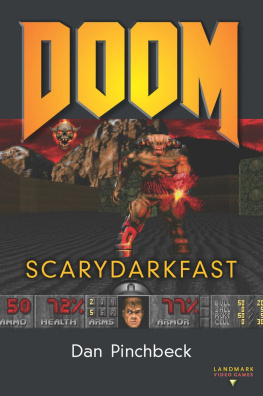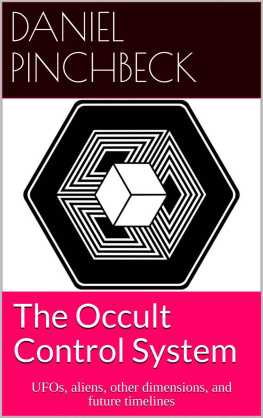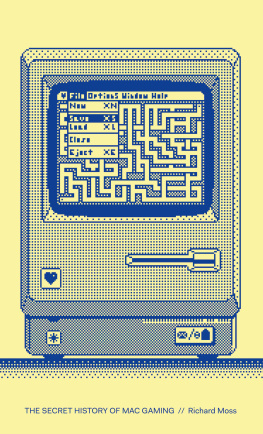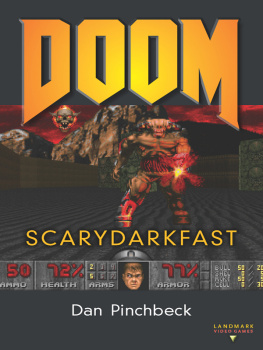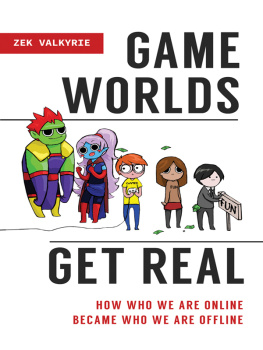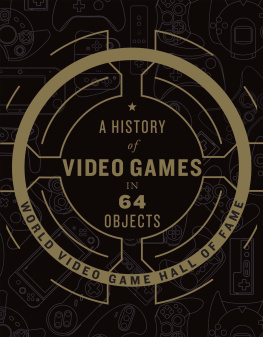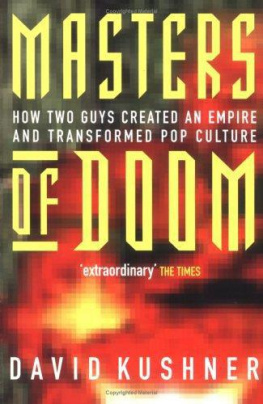INTRODUCTION
There Are a Lot of People Totally Opposed to Violence. Theyre All Dead.
It was early 1994, and the core, as I remember it, was me and my friends Tom and Andy. Tom was the one with the PC. We used to get together in his room in the halls of residence, with the lights off, and play this new game hed just got. Usually, he was a freak for role-playing gamesmost recently, a top-down steampunk set on Marsand a group of us would occasionally pull an all-nighter on Civilization (MicroProse 1991), but that winter, there was really only one game: ids seminal shooter DOOM. Its difficult to overstate the impact DOOM had on us all. Wed all thoroughly enjoyed Wolfenstein 3D (id Software 1992), of course, but for a bunch of nineteen-year-olds in the pre-PlayStation era, DOOM just blew everything else into bloody gibs.
This is a book about the most important first-person game ever made, about the blueprint that has defined one of the most successful genres of digital gaming. It is about a controversial, hyperviolent, scary, funny, exciting game that manages to be both profoundly, self-congratulatory dumb and exceptionally clever at the same time. All this and a chaingunwhat more could you ask for?
I love first-person games: I think they are the most engaging, furious, immersive digital game form, even when they deviate from the basic run-and-gun model carved out by DOOM and typified by recent shooters like Bulletstorm (People Can Fly 2011) and Killzone 3 (Guerilla Games 2011). There is something absolutely unique about the direct mapping of your perception onto an avatars, something really wonderful about how, in many ways, these games extend the rewarding simplicity of early arcade gaming into the most high-end edges of technological implementation. The contemporary first-person shooter Crysis 2 (Crytek 2011) may look like an oil painting (if not actually better), but at heart, its just first-person Defender (Williams Electronics 1981). Lurking just below the dystopian musings on free will and capitalism that give Bioshock (2K Boston + 2K Australia 2007) its unique flavor is Wolfenstein 3D with water and a wrench.
DOOMs legacy includes some of the finest moments in gaming yet produced. Without it, Half-Life (Valve Software 1998) wouldnt have pushed how story is delivered in games seismically forward or set the crowbar at a new high for level design. There would be no Portal (Valve Software 2007), no Call of Duty: Modern Warfare 2(Infinity Ward 2009), no F.E.A.R.: First Encounter Assault Recon (Monolith 2005), no Mirrors Edge (DICE 2008). The technological advances of DOOM cast an equally long, dynamically rendered shadow. Then theres the creation of the online multiplayer gaming scene, via id embracing the idea of players playing against one another over LANs and online networks. You could argue that maybe the entirety of the massively multiplayer economy owes something to DOOM. Finally, ids championing of the open-source ethosnot just through the adoption of the Apogee model but through opening up of build tools to fan communitieseffectively created the modding scene, which has had a huge impact on gaming as a movement.
Enough hyperbole. Ive made some pretty big claims here, and though I suspect that you dont really need convincing if you know anything about games, duty calls me to offer some evidence to back them up. So this is what were going to do: examine the context that DOOM crawled into, bloody and triumphant; talk a little about id, the dark heart of the enterprise; and try to paint a picture of the games impact on release. Were going to take a tour under the hood to look at what made DOOM so important as a piece of software engineering. Then it will be time to get down and dirty on Phobos, Deimos, and Hell itself and discuss level and experience design. In case all that isnt enough, theres some other work to do. We have to look into multiplayer in a little more detail, and we need to discuss mods. We need to talk about the ports, sequels, and reboots: DOOM II and particularly DOOM 3. So thats enough introduction: strap on your ammo bandolier, power up the plasma gun, grab some blue armor, and, in the immortal words of DOOMs hilariously succinct intro, put a couple of pellets in the forehead of whatever killed your buddies.
Assuming, for just a minute, that you may have been living in a bunker for the last nineteen years, I need to make a formal introduction. DOOM is a first-person shooter. Its minimal heads-up display contains an ammo counter, a health and armor bar, a picture of your avatars head (visually showing what kind of physical state you are in), and a keycard indicator. Above this, you can see a hand holding a variety of weapons. You can move about horizontally (including strafing, use a generic action key to open doors and press buttons, collect objects such as health kits and ammo and armor lying around the place, and shoottheres lots of shooting. In academic terms, DOOM is based around the core activity of lining up objects with the center of the screen and removing them by pressing the shoot button. You start in a complex environment, and you simplify it by removing agents and pressing all the buttons there are to press and collecting all the objects there are to collect. You can cut part of the simplification process out by just running for the exit (normally impossible without first finding a keycard or two), but although this is possibleand well return to speedruns in subsequent chaptersthe game is all about simplifying the environment, with extreme prejudice.
DOOM takes place in an industrial base on a Martian moon that has been invaded by demons from Hell. You are the last survivor, and gameplay takes the form of you battling onward through a variety of locations, exterminating anything that moves. The demons are intent on reducing you to a bloody smear on the corporate carpet, and attempt to do so by clawing, biting, and rending you at close range and by blasting you with shotguns and fireballs from a distance. If you havent played DOOM but have played any first-person shooter, you already know this is fast, simple gameplay, alternating between tense exploration and adrenaline-fueled gunfights. If you havent played either DOOM or any other FPS, your life is poorer as a result, and you should stop reading this and get in on the action immediately. Thats the basic overview; well go into more detail later on, but from here on in, Im going to assume you have, at the least, an awareness of a product called DOOM out there in the world and some inkling of what playing it entails.
The first release of DOOM occurred on December 10, 1993, in the form of a free shareware episode available for download, plus two further episodes requiring payment. The fact that id used the embryonic Internet as a distribution channel, co-opting the emerging online communities, speaks volumes about just how cleverly they understood the context into which their game was going to launch. Netscape was founded in October 1994, the Mosaic web browser (National Center for Supercomputing Applications) in January 1993. These were the glory days of the Gopher protocol, computerized bulletin board systems, and Usenet. Networked games were not necessarily new. MUSE had launched MUD1 via CompuServe and CompuNet in the United States and the United Kingdom in 1985, and the ancient equivalent of LAN battles had actually been hardwired into the genre from its very conception, with networked games being established through the 1970s. The idea of using modem-to-modem networks to support multiplay globally was a hugely ambitious goal. Bear in mind, this is all before Steam and other online game stores, way before any general idea of mass digital distribution of games was in the offing. Users were used to file sharing, of course, but the idea of inviting mass, user-driven distribution of a full third of a game as a marketing exercise was quite brilliant, and as we shall see, id co-opted Scott Millers brilliance to propel

